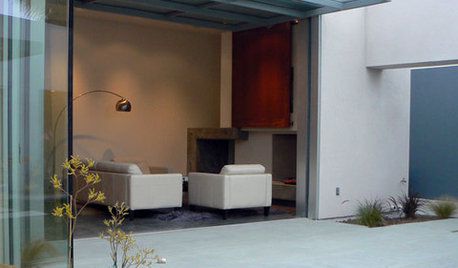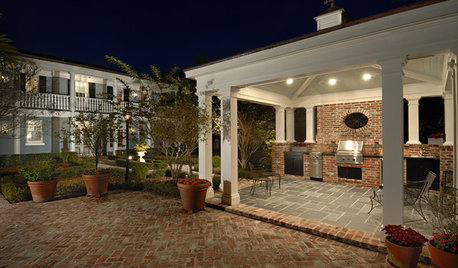My Venis fly trap
trap7
18 years ago
Related Stories

MOST POPULARHow to Get Rid of Those Pesky Summer Fruit Flies
Learn what fruit flies are, how to prevent them and how to get rid of them in your home
Full Story
DECORATING GUIDESHow to Channel Your Inner New Bohemian
Creative and artsy, unique and layered, these looks lead to an inspiring lifestyle at home
Full Story
HOUZZ TOURSHouzz Tour: An East Coast Cottage Look in Los Angeles
Traditional Eastern Seaboard style takes root in a new LEED Gold home in Southern California
Full Story
FEEL-GOOD HOMEInherited Pieces: Embrace the Approach That Works for You
How you remember and honor loved ones through heirlooms is your decision alone
Full Story
MODERN ARCHITECTUREKeep Your Big Windows — and Save Birds Too
Reduce bird strikes on windows with everything from architectural solutions to a new high-tech glass from Germany
Full Story
GARAGESNot Just for Cars: Garage Doors for the Home
See how the nontraditional use of a garage door could transform your living space
Full Story
GARDENING AND LANDSCAPINGBid Bad Garden Bugs Goodbye and Usher In the Good
Give ants their marching orders and send mosquitoes moseying, while creating a garden that draws pollinators and helpful eaters
Full Story
GARDENING AND LANDSCAPINGPorch Life: Banish the Bugs
Don't let insects be the bane of your sweet tea and swing time. These screening and product ideas will help keep bugs at bay on the porch
Full Story
LIFEHow to Outsmart Backyard Critters
Learn to think like a raccoon, skunk or squirrel to keep your home safe and your garden intact
Full StorySponsored







petiolaris
xymox
Related Professionals
Glassmanor Landscape Architects & Landscape Designers · Saint Louis Park Landscape Architects & Landscape Designers · Norwood Landscape Contractors · Brookline Landscape Contractors · Ellensburg Landscape Contractors · Fort Myers Landscape Contractors · Glendale Heights Landscape Contractors · Goodlettsville Landscape Contractors · Lyndhurst Landscape Contractors · Lynn Landscape Contractors · North Ridgeville Landscape Contractors · Shirley Landscape Contractors · Twin Falls Landscape Contractors · Vallejo Landscape Contractors · Spring Swimming Pool Buildersakheadbanger
dean2
petiolaris
sbspargo_hotmail_com
petiolaris
meganr15_hotmail_com
ironious2_yahoo_com
mutant_hybrid
sundancer_92
petiolaris
mutant_hybrid
sundancer_92
mutant_hybrid
petiolaris
ironious
ironious
mutant_hybrid
ironious
mutant_hybrid
ironious
sundancer_92
mutant_hybrid
ironious
petiolaris
mutant_hybrid
sundancer_92
olliechan1313
abster2229
mutant_hybrid
tommyr_gw Zone 6
cararose1977
tommyr_gw Zone 6